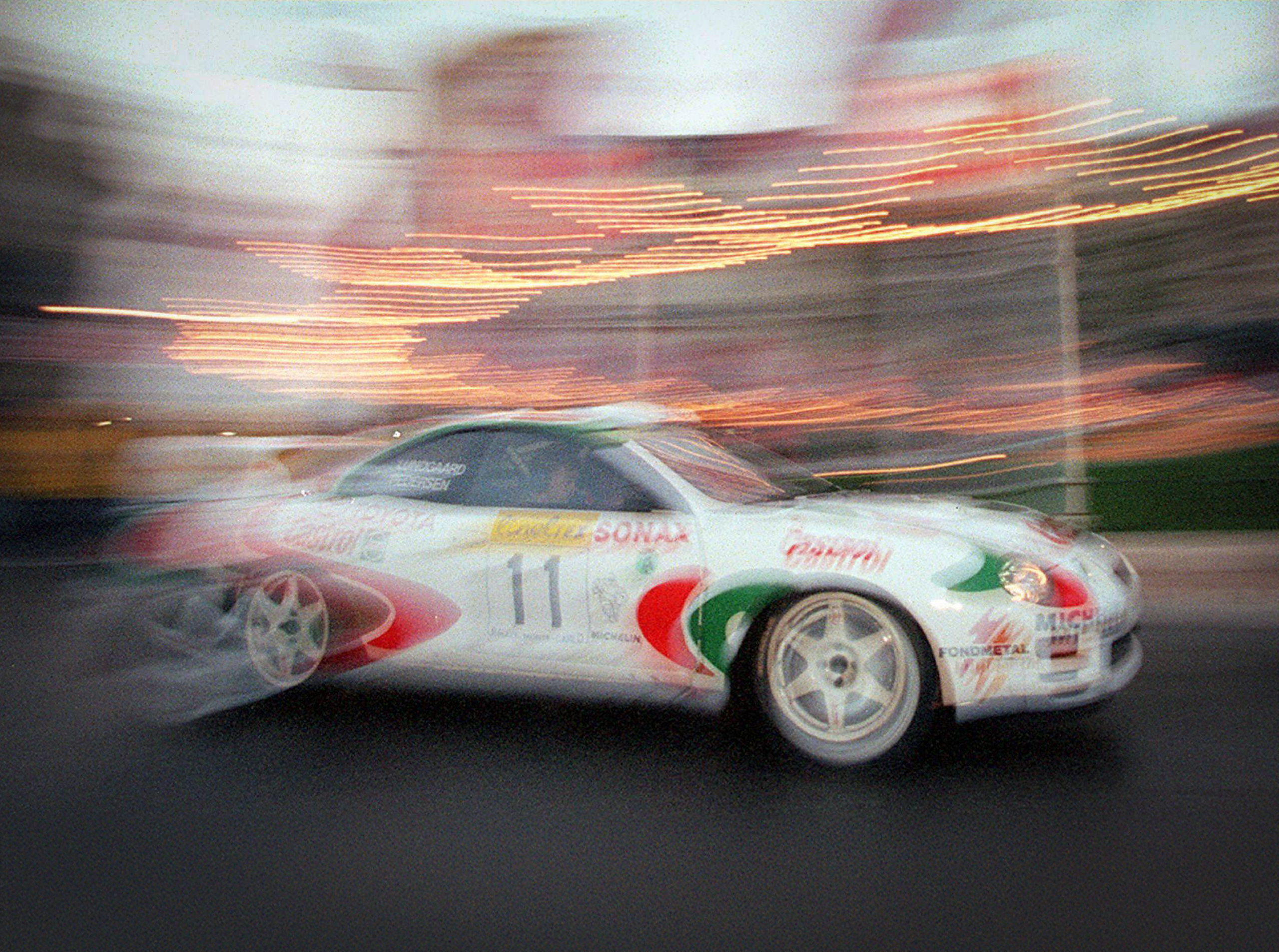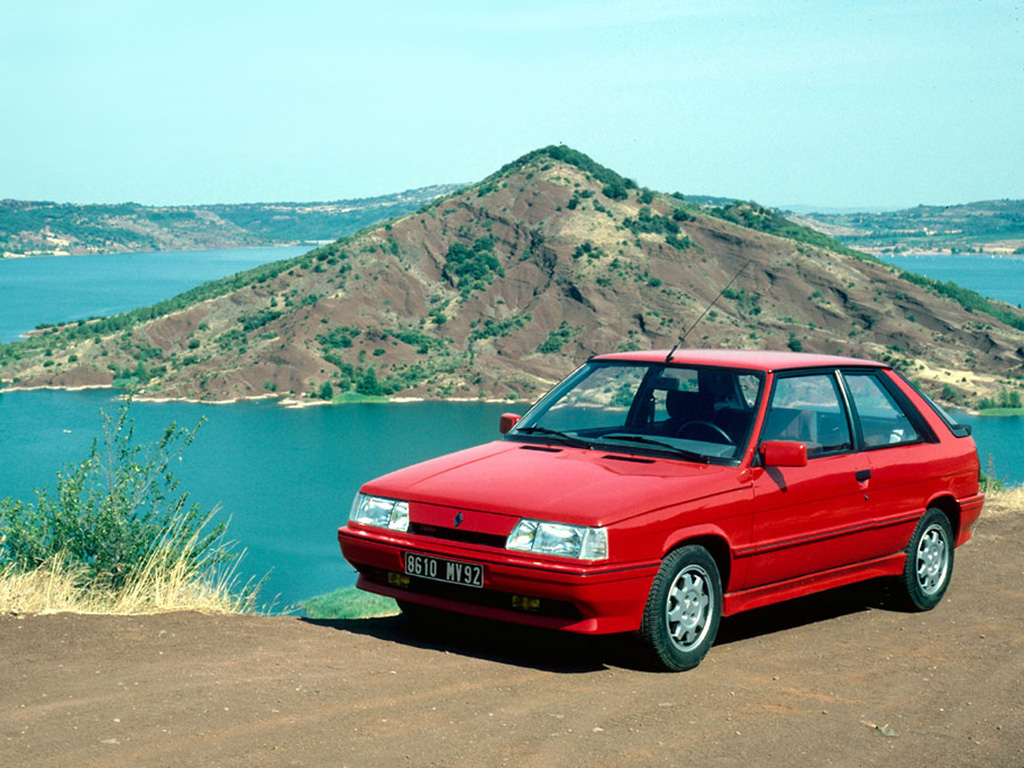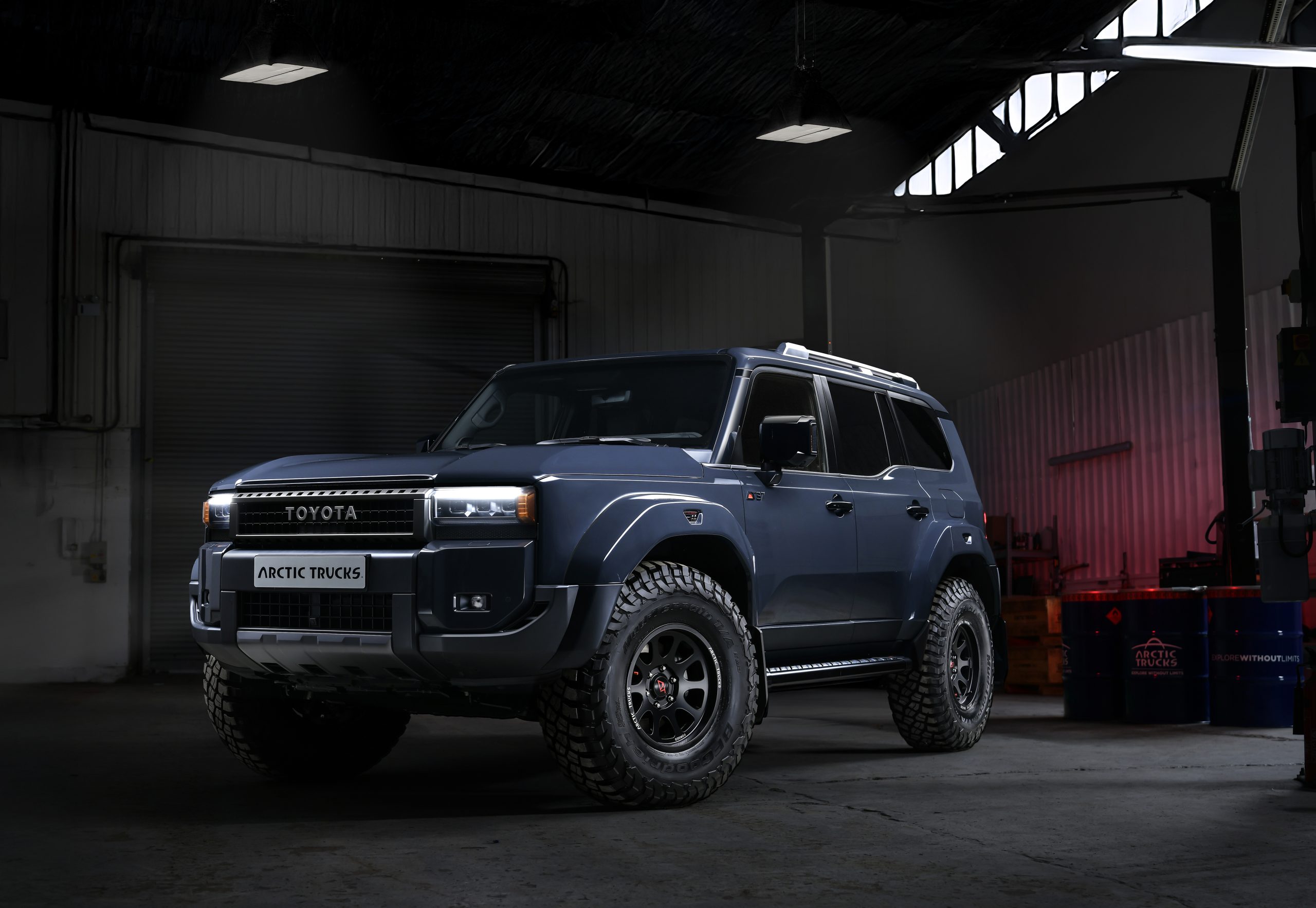If you’re of a certain age, the reveal last week at the annual SEMA show in Las Vegas of Toyota’s GR86-based Rally Legacy Concept played a digital soundtrack in your head and set any change in your pockets a-jangling. A two-door Toyota with turbo power, all-wheel drive, and red, white, and green racing livery? Time for a good old-fashioned Sega Rally!
The concept is of course an explicit tribute to the Celica GT-Four rally cars of the 1990s, the first Japanese all-wheel-drive machines to win in the World Rally Championship. It makes a great deal more sense than the odd choice to turn a Supra into a tribute to Richard Petty’s 1970 Plymouth Superbird NASCAR, but that doesn’t mean Toyota’s actually going to build a production rallying GR86. It doesn’t need to, not with the GR Yaris actually winning WRC championships, and the GR Corolla in showrooms for any Sega Rally fans who now have lines of credit rather than stacks of coins.

But what if you like your Toyota rally machines vintage, still punchy performers but something that is also a good potential investment? Well, then, you’ve got to go straight to the source and pick up an original Celica GT-Four or All-Trac Turbo, one of the three generations that put Toyota on the rally map in the first place.
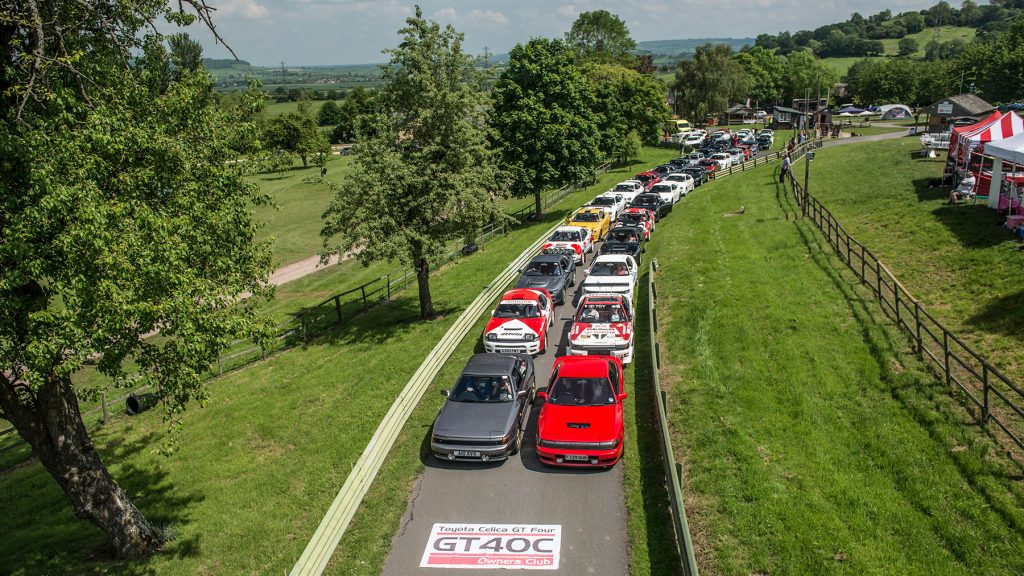
The Celica nameplate arrived in 1970 as an economical and fun little coupe with a tough and thrify four-cylinder powerplant. They’re interesting and accessible collectibles now, with mini-Mustang vibes and simple mechanicals.
By 1985, Toyota made its largest change to the Celica platform, modernising it with front-wheel-drive architecture and rounded-off, aerodynamic styling. As a liftback, coupe, or convertible, it offered sporty-ish appeal at an affordable price with thoroughly pragmatic four-cylinder power. As with the original, it was slightly interesting, but all business underneath.
Thing is, Toyota needed to take the Celica rallying. The company had already done so with the previous generation, building 220 examples of the Celica GT-TS to satisfy homologation rules, then fielding a rear-drive Group B monster that could produce up to 380bhp depending on trim. Rallying fans called this car “The King of Africa,” as it dominated at the Safari and Ivory Coast rallies.
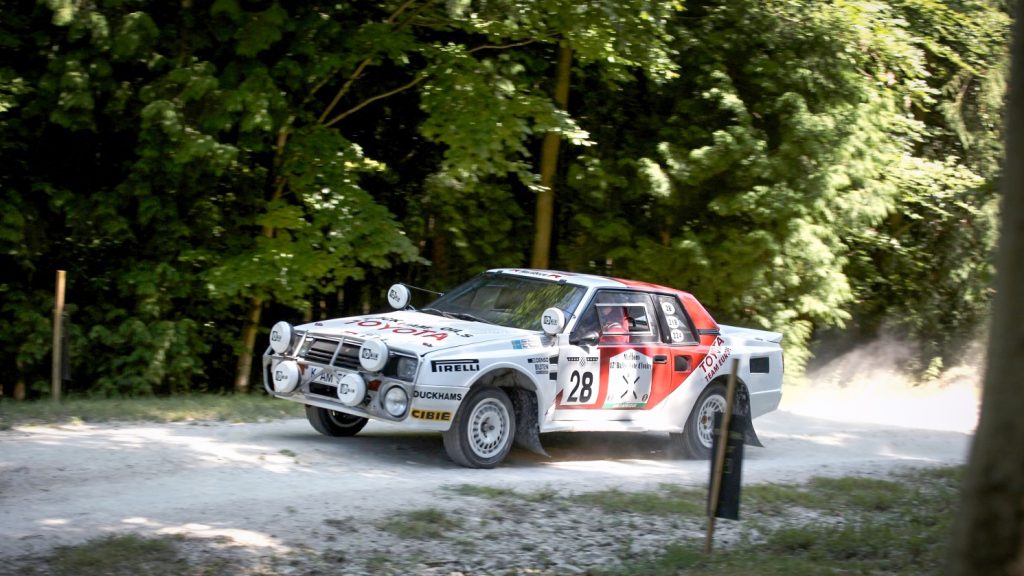
But Toyota’s future plans for Group S rally (the followup to Group B) were based around a wild reimagining of the MR2 called the 222D. This car was Toyota’s Lancia 037 moment, except blended with all-wheel drive. With a mid-mounted 2.0-litre turbocharged engine and a Stratos-short wheelbase, the 222D would have been a handful, but undoubtedly some talented Scandinavian would have been able to wrestle it into submission. Instead, the FIA scrapped Group B and plans for Group S in the wake of several crashes, the final straw being the death of championship favourite Henri Toivonen. Suddenly, the rules were different, and homologating a rally car meant Toyota would have to build and sell 5000 examples, rather than just a couple hundred.
There wasn’t much time to pivot, but in the new front-wheel-drive Celica, Toyota did have the architecture to create an all-wheel-drive version for homologation purposes. The resulting GT-Four was nearly identical to the front-wheel-drive cars, but it got a reworked rear suspension, bigger sway bars, and upgraded brakes.
Under the hood was a 2.0L, double-overhead-cam four-cylinder with oil cooling for the pistons and a water-air intercooler for the turbocharger. Power wasn’t huge by modern standards – 185bhp at 6000rpm and 177lbft of torque – but with a kerb weight under 3000 pounds, this was a quick little car for its time. Even better, unlike other Japanese rally specials like the Subaru WRX, U.S. audiences wouldn’t have to wait until the 2000s to get their hands on one.
Branded as the Celica All-Trac Turbo for the 1988 model year, the car received critical acclaim right out of the gate. It also happily arrived on the heels of a Celica winning the IMSA GTO championship; the public knew that Celica meant performance. OK, so the IMSA car was a pretty far cry from the road-going Toyotas, with tubular space frame construction, 450 turbocharged horsepower, and rear-wheel-drive, but you could still head on down to your Toyota dealership and buy a sporty coupe that looked like a box-flared champion. If you squinted.
Meanwhile, in the rally scene, the Celica GT-Four was cleaning up. With this first ST165 generation, Spanish duo Carlos Sainz and co-driver Luis Moya beat Lancia to win the 1990 driver’s championship in WRC racing. Lancia did, however, outscore Toyota by six points to win the manufacturer’s championship.
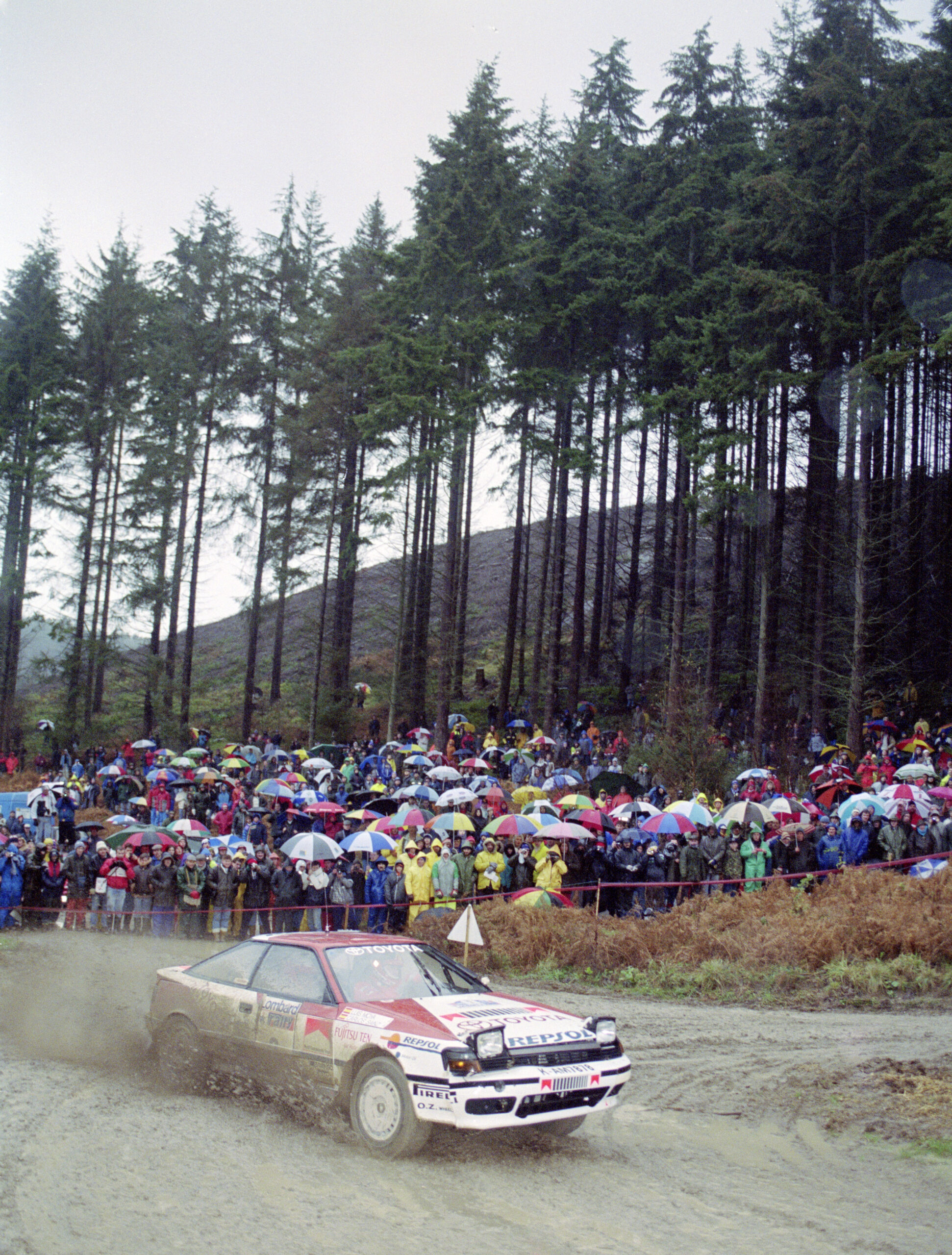
Lancia would also win both titles in 1991, but the next year, Toyota was ready with its next-generation car. Before we dissect that model, let’s take a quick detour to where many enthusiasts got their first chance to get behind the wheel of a rally-bred Celica: Sega Rally.
Launched in 1995 as an arcade cabinet, Sega Rally Championship would go on to produce a whole series of rallying games running until 2011. Only three cars were used in the original – a Lancia Delta, a Celica GT-Four in Castrol racing livery, and a hidden Stratos you could unlock. By today’s standards, the 3D graphics are laughably blocky, but the computing in its day was cutting edge, Sega working in partnership with aerospace giants like Lockheed to design the arcade’s circuit board.
Sega Rally would go on to inspire the rally sections in games like Gran Turismo, and you can in fact buy and race a 1995 Toyota Celica GT-Four rally car in the current version. Sega employees went to great lengths to get the feel of the game right, even bringing in Japanese rally driver Yoshio Fujimoto for feedback when they created the home version for the Saturn game system.
The second-generation Celica All-Four won the WRC drivers championship in 1992, 1993, and 1994, with the 1993 win finally getting Toyota that much coveted manufacturer’s title. Infamously, in 1995, Toyota was caught using a clever engineering trick to get around the restrictor plates imposed by the FIA and had its points stripped. Instead, that year would see a young Scot by the name of Colin McRae give Subaru its first WRC manufacturer’s championship, and the rest is history.

For the road cars, the first- and second-generation Celica GT-Four were sold as the All-Trac Turbo. The 1990–93 models came with 200bhp, interesting styling, and some driveline improvements over the first generation car. They did not sell particularly well given the premium over the standard Celica, but that just makes them rare and interesting.
There was also a third-generation GT-Four in European and Japanese markets, built from 1994 to 1999. The one to have is the GT-Four WRC, 2500 of which were built for homolgation. These feature all kinds of fun rally car extras like plumbing for anti-lag systems and a water spray system for the intercooler.

So, if Toyota won’t sell you a rally-spec GR86, you can simply go buy one of the Celica originals, in All-Trac or GT-Four form. Alternatively, get your hands on a GR Corolla while you still can: There aren’t many rally-style hot hatchbacks on the market at present, and who knows when it will disappear. Granted, the Corolla’s not a Celica, but just look at what’s written on its side sills: GT-Four. If you happen to order a white one, call up your local vinyl shop and add a bit of Sega Rally into your daily drive.
